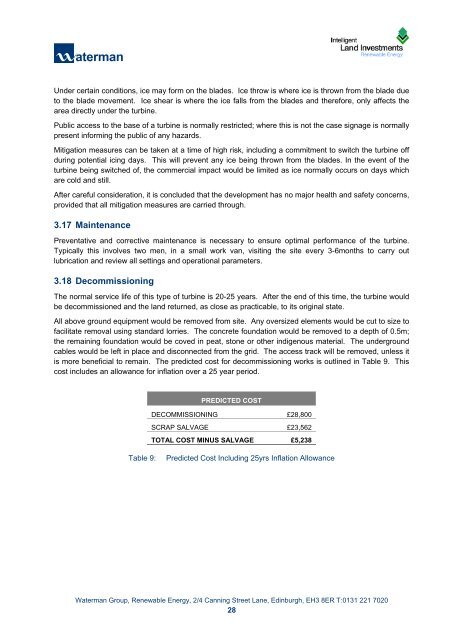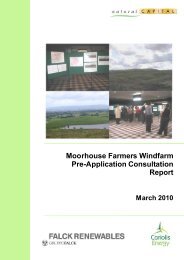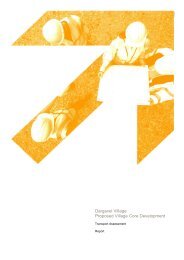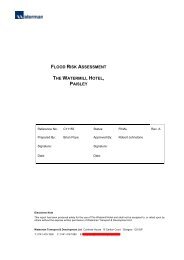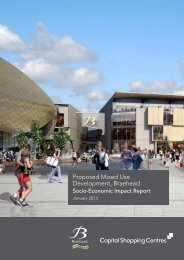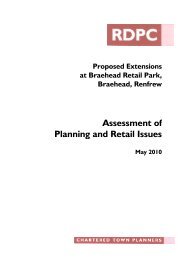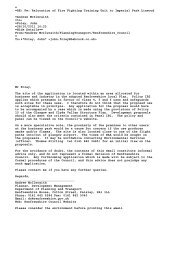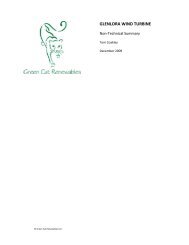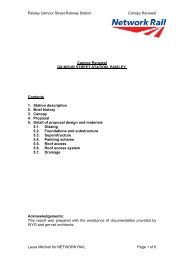Supporting Documentation - Renfrewshire Council
Supporting Documentation - Renfrewshire Council
Supporting Documentation - Renfrewshire Council
You also want an ePaper? Increase the reach of your titles
YUMPU automatically turns print PDFs into web optimized ePapers that Google loves.
Under certain conditions, ice may form on the blades. Ice throw is where ice is thrown from the blade due<br />
to the blade movement. Ice shear is where the ice falls from the blades and therefore, only affects the<br />
area directly under the turbine.<br />
Public access to the base of a turbine is normally restricted; where this is not the case signage is normally<br />
present informing the public of any hazards.<br />
Mitigation measures can be taken at a time of high risk, including a commitment to switch the turbine off<br />
during potential icing days. This will prevent any ice being thrown from the blades. In the event of the<br />
turbine being switched of, the commercial impact would be limited as ice normally occurs on days which<br />
are cold and still.<br />
After careful consideration, it is concluded that the development has no major health and safety concerns,<br />
provided that all mitigation measures are carried through.<br />
3.17 Maintenance<br />
Preventative and corrective maintenance is necessary to ensure optimal performance of the turbine.<br />
Typically this involves two men, in a small work van, visiting the site every 3-6months to carry out<br />
lubrication and review all settings and operational parameters.<br />
3.18 Decommissioning<br />
The normal service life of this type of turbine is 20-25 years. After the end of this time, the turbine would<br />
be decommissioned and the land returned, as close as practicable, to its original state.<br />
All above ground equipment would be removed from site. Any oversized elements would be cut to size to<br />
facilitate removal using standard lorries. The concrete foundation would be removed to a depth of 0.5m;<br />
the remaining foundation would be coved in peat, stone or other indigenous material. The underground<br />
cables would be left in place and disconnected from the grid. The access track will be removed, unless it<br />
is more beneficial to remain. The predicted cost for decommissioning works is outlined in Table 9. This<br />
cost includes an allowance for inflation over a 25 year period.<br />
PREDICTED COST<br />
DECOMMISSIONING £28,800<br />
SCRAP SALVAGE £23,562<br />
TOTAL COST MINUS SALVAGE £5,238<br />
Table 9: Predicted Cost Including 25yrs Inflation Allowance<br />
Waterman Group, Renewable Energy, 2/4 Canning Street Lane, Edinburgh, EH3 8ER T:0131 221 7020<br />
28<br />
K:\Projects\CIV12920_ILI Windfarms_Batch 7\CIV12920_XXX_Hartfield<br />
Farm\Documents\Reports\CIV12920_1202xx_Hartfield_<strong>Supporting</strong> Turbine Assessment_225kW.docx


